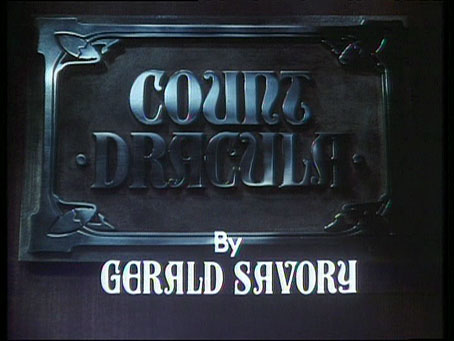
Vampires: if they’ve never been very scarce they didn’t used to be quite so commonplace. The fortunes of Dracula, on the other hand, seem to have diminished in recent years following a centenary peak in 1997. The surprising spike of interest in the 1970s might explain the BBC’s decision to adapt Bram Stoker’s novel for television in 1977. I often used to wonder why the corporation didn’t turn some of its costume-drama prowess to more generic material. Anthony Trollope’s The Pallisers sprawled over 26 50-minute episodes in 1974 but you’d search in vain for an adaptation of HG Wells. The closest was the yearly Ghost Story for Christmas most of which were period pieces.
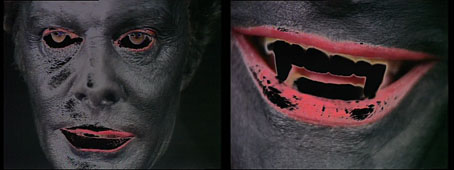
Louis Jourdan bares his fangs.
Gerald Savory’s Count Dracula, subtitled “A Gothic Romance”, was broadcast a few days before Christmas, 1977, in a single 150-minute programme. Repeat screenings broke the drama into two episodes so it’s often referred to as a mini-series. I’d read Dracula for the first time earlier that year so it was a thrill to see the story presented in such a faithful manner after all the liberties taken by feature films and derivative dramas. Count Dracula may seem primitive when compared to lavish Hollywood productions but 37 years later it’s still the adaptation that most closely adheres to Stoker’s epistolary novel.
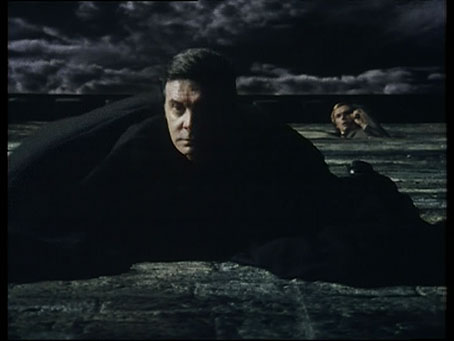
Louis Jourdan and Bosco Hogan (Jonathan Harker).
Philip Saville directed, and managed to pull off some impressive moments despite the considerable limitations of a BBC budget and TV studio sets. David J. Skal in Hollywood Gothic: The Tangled Web of Dracula from Novel to Stage to Screen (1990) writes that the BBC production was the first to show the count crawling down the wall of his castle. Some of the other effects are less impressive, especially a scene showing the storm-tossed ship. At the time more fuss was made over the casting, notably the appearance of Hollywood star Louis Jourdan in the role of Dracula, but also the pairing of Frank Finlay as Van Helsing and Susan Penhaligon as Lucy Westenra; Finlay and Penhaligon had caused a stir the year before playing an incestuous father and daughter in Bouquet of Barbed Wire.
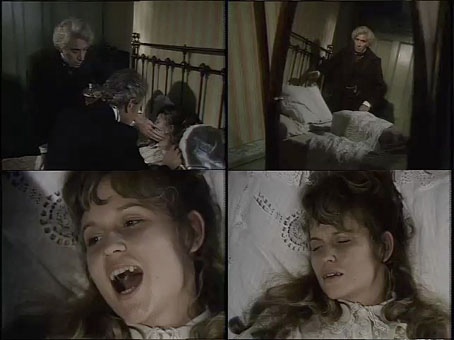
Frank Finlay, Mark Burns (John Seward) and Susan Penhaligon.
Jourdan always impressed me as Dracula even though he’s physically slight compared to Christopher Lee. He’s serious throughout, seems aristocratic (not all actors do) and conveys the requisite menace. This may be a BBC costume drama but Saville doesn’t avoid the erotic nature of the encounters between Dracula and Lucy, and there’s more groaning on the soundtrack than you’ll find in the horniest of the Hammer films. Of the rest of the cast Jack Shepherd stands out in the role of Renfield, a rare performance that presents the character sympathetically, not as the usual gibbering caricature. Other plus points are the use of Whitby as a location, and the effortlessly photogenic Highgate Cemetery which doubles as the site of Lucy’s tomb and the entrance to Carfax Abbey.
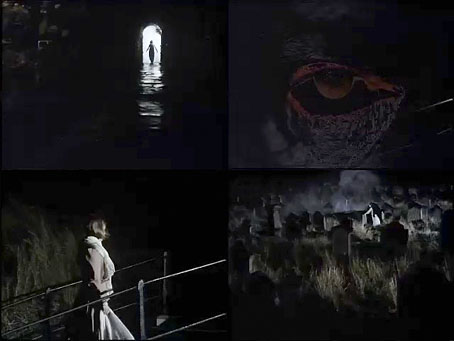
Bram Stoker’s character may be perennially popular but most recent adaptations seem to owe more to other films than to their source material. Much as I enjoy the overwrought mise en scène of Francis Coppola’s adaptation it’s good to return to the Savory/Saville version now and then; when you can’t disguise the narrative flaws with expensive sets and special effects the acting and the writing has to be so much better. Count Dracula can be found on YouTube in a variety of versions all of which seem to be subtitled. The screenshots here are taken from the BBC DVD. If you’ve never seen it, I recommend it.
Previously on { feuilleton }
• Symbolist cinema
• John Osborne’s Dorian Gray

I saw this when it first came out,when i was 11 and I found it to be much more disturbing than the few Dracula films I’d seen up to then. The wall crawling scene was genuinly creepy and (As I didn’y know about reverse projection) the smoke retreating through the keyhole did my head in for ages.
It has it’s limitations, but I bought it on DVD recently, and I still think it stands up well.
I adore Louis Jourdan and have never heard of this before. Most intriguing! Will definitely investigate. Thanks for sharing!
I saw this version of Dracula when it aired on PBS in the states. I had seen almost all the Hammer versions, but this one was true to Stoker’s text and unsettling with its eroticism and the crawling on the wall scene. I fell in love with Susan Penhaligon and Judi Bowker. I saw it with my mother, who was a Louis Jordan fan. His menace as the Count was, to use a much used Lovecraftian adjective, blasphemous.
Like Milton’s masterpiece, in Bram Stoker’s Dracula we are of the Count’s party.
Absolutely my favorite version! I was sustained for years until it became available on DVD by a VHS copy of a Halloween broadcast on an Atlanta public TV station. Over here it’s often referred to as the “Masterpiece Theater” version.
The performances have real bite to them (sorry). The scene when Lucy, dying in bed, morphs from sweet dessicated angel into sexy hungry vampire is a kicker. And Jack Shepherd steals the show.
Should also note the seriously creepy Ondes Martenot soundtrack.
Re: Louis Jourdan, if I hadn’t written enough already I would have said above that ever since seeing this I “read” him as Dracula in other films like Gigi and Letter from an Unknown Woman.
Stephen: I don’t remember that detail about the soundtrack so it’s obviously time to watch it again.